Sigma 24-70 mm f/2.8 EX DG HSM
9. Ghosting, flares and transmission
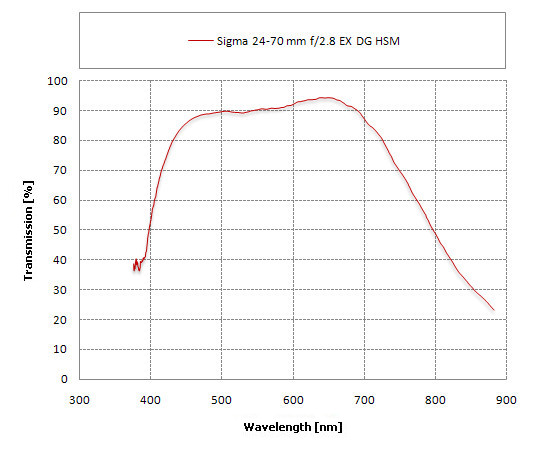 |
First of all we are pleased that in the wide spectrum range – from the proximity of 450 nm to almost 700 nm – the lens lets pass at least 90% of light. The most of it, namely 94%, passes the lens for the wavelength of about 650 nm, so for the red colour. You should make aware of how huge is this value. The Sigma consists of 12 groups of elements so there are as much as 24 glass-to-air surfaces to be covered with anti-reflex coatings. To have the transmission on the 94% level you cannot lose more than 0.25% of light on one surface. Such coatings are simply state of the art.
Please Support UsIf you enjoy our reviews and articles, and you want us to continue our work please, support our website by donating through PayPal. The funds are going to be used for paying our editorial team, renting servers, and equipping our testing studio; only that way we will be able to continue providing you interesting content for free. |
- - - - - - - - - - - - - - - - - - - - - - - - - - - - - - - - - - - - - - - - - - - - - - - -
You can ask one more question: does Sigma really offers us here something more than in its cheaper zoom lenses? It happens that we can answer this question with ease: not so long ago, we’ve tested a Sigma 18-125 mm OS, an amateur shelf zoom with 12 groups of elements so also with 24 glass-to-air surfaces to cover. If the coatings in both lenses were the same, both instruments would give us the same transmission curves. Is it really the case? Let’s have a look at the picture below.
 |
As you see the graphs are in shape alike but moved by 5 percent on average. That much we get buying a better lens.
After comparing a cheaper and a more expensive Sigma, it’s worth asking how the Sigma 24-70 comes out when compared to its rivals. Next chart can answer this question, as it presents the comparison between the Sigma and the Nikkor AF-S 24-70 mm f/2.8 transmission.
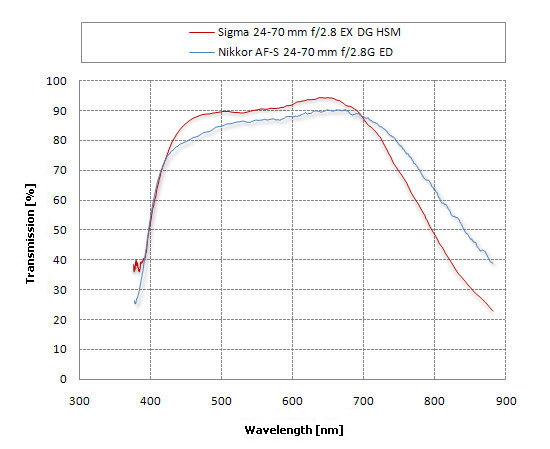 |
Here we get a surprise. It is big indeed, especially that the Nikkor, consisting of 11 groups of elements, had two glass-to-air surfaces less to cover. Despite that fact and despite of the higher price, the Nikkor’s results are worse than the Sigma’s in almost all visible spectrum by about 3-5%. A big ovation for Sigma!
Good anti-reflex coatings are the key factor if you want to succeed in working against the light. The coatings alone are not everything, though. The mechanical construction of the lens’s body can support significantly dampening down unwanted flares by the coatings. How does the Sigma handle this problem? Looking at the shots below we can hardly be pleased. Working on both a D200 and a D3x it shows different artifacts at all focal lengths. It should be noticed that on stopping down the situation gets worse and it ameliorates at wider apertures. What’s more, they seem to be a bit stronger on the full frame D3x camera than on the D200.
 |
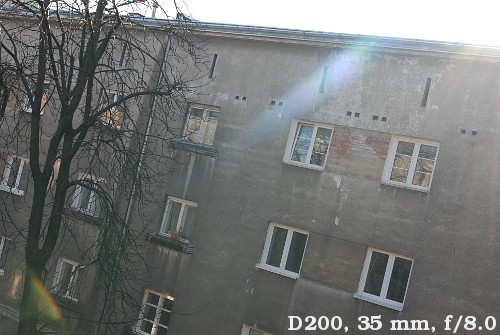 |
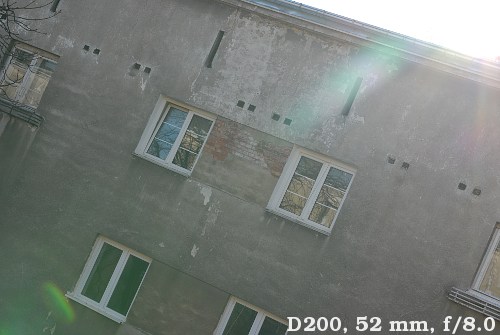 |
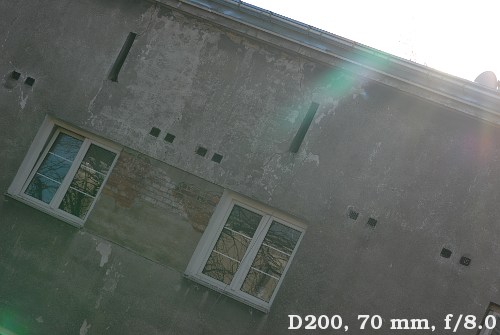 |
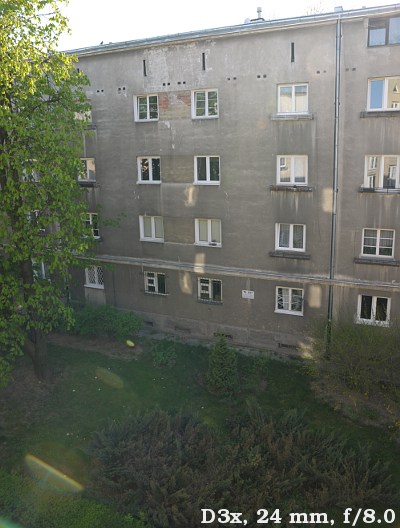 |
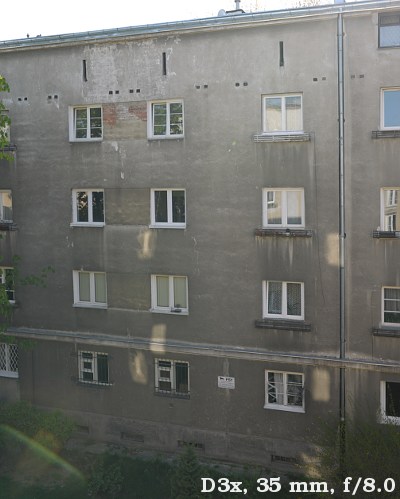 |
 |






